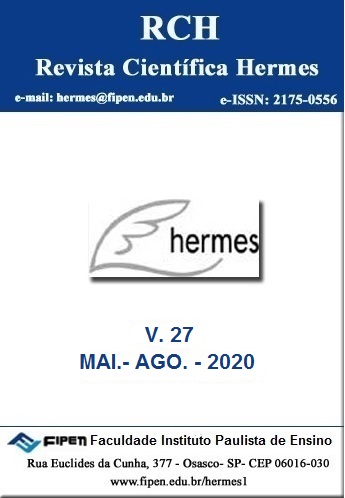Cryptocurrency and religion: bitcoin’s use in islamic finance
DOI:
https://doi.org/10.21710/rch.v27i0.537Keywords:
Islamic Finance, Bitcoin, Portfolio Diversification.Abstract
Bitcoin utilizes the technology of a Peer-to-Peer (P2P) data network transaction logging system known as a Blockchain, to be transferred, bought and sold without the need for authentication and verification of a third part. It is therefore a Cryptocurrency, as well as lesser known ones such as litecoin, worldcoin, solidcoin, ixcoins, coinbuck, betacoin, tenebrix. zcash, to name a few among the more than a thousand in existence today. One of its basic features is that they do not have a central authority responsible for the settlement and clearing of transfers made through institutionalized mechanisms. Due to the growing popularity and importance of Bitcoin, investors and researchers have recently begun to evaluate Bitcoin from the perspective of Islamic business, economics and finance, where interest collection, uncertainty and speculation practices are reprehensible in light of Shariah or Law. Islamic This article explores the possibilities of using Bitcoin as a portfolio optimization strategy for Islamic fund managers. To achieve the research objective, three econometric modeling were used: DCC-GARCH (Dynamic Conditional Correlation), CWT (Continuous Wavelet Transform) and MODWT (Maximal Overlap Discrete Wavelet Transform). The results indicate that Bitcoin and Shariah stock indices are low and negatively correlated, suggesting that Islamic stock investors may benefit from Bitcoin diversification and that the fundamentals of such currencies may be further investigated for the benefit of Islamic capital markets.
References
Aguiar - Conraria, L., & Soares, M. J. (2011). Oil and the macroeconomy: using wavelets to analyze old issues. Empirical Economics, 40(3), 645-655.
Arash, M., & Alloway, T. (2017) Bitcoin ETF Plan Struggles to Find Support. The Financial Times, 10 May.
Ariff, M., & Rosly, S. A. (2011). Islamic banking in Malaysia: unchartered waters. Asian Economic Policy Review, 6(2), 301-319.
Arthur, C. (2017). Bitcoin: Man Charged over Alleged Multimillion - Dollar Ponzi Fraud. The Guardian, 10 May.
Balchunas, E. (2013). Diamonds and Kazakhs and Bitcoins, Oh My: An ETF Parade. Bloomberg, 12 July.
Balcilar, M., Bouri, E., Gupta, R., & Roubaud, D. (2016). Can Volume Predict Bitcoin Returns and Volatility? A Nonparametric Causality-in-Quantiles Approach, REPEC Working paper no. 201662.
Bouoiyour, J., & Selmi, R. (2015). What Does Bitcoin Look Like? Annals of Economics and Finance, 16(2), 449-492.
Bouoiyour, J., Selmi, R., & Tiwari, A. K. (2015). Is Bitcoin business income or speculative foolery? New ideas through an improved frequency domain analysis. Annals of Financial Economics, 10(1), June.
Bouri, E., Gupta, R., Tiwari, A. K., & Roubaud, D. (2017). Does Bitcoin hedge global uncertainty? Evidence from wavelet-based quantile-in-quantile regressions. Finance Research Letters, February, 1-9.
Bouri, E., Jalkh, N., Molnár, P., & Roubaud, D. (2017). Bitcoin for energy commodities before and after the December 2013 crash: diversifier, hedge or safe haven?. Applied Economics, March, 1-11.
Bouri, E., Molnár, P., Azzi, G., Roubaud, D., & Hagfors, L. I. (2017). On the hedge and safe haven properties of Bitcoin: Is it really more than a diversifier? Finance Research Letters, 20, 192-198.
Bouri, E., Molnár, P., Azzi, G., Roubaud, D., & Hagfors, L. I. (2017). On the hedge and safe haven properties of Bitcoin: Is it really more than a diversifier? Finance Research Letters, 20, 192-198.
Brandvold, M., Molnár, P., Vagstad, K., & Valstad, O. C. A. (2015). Price discovery on Bitcoin exchanges. Journal of International Financial Markets, Institutions and Money, 36, 18-35.
Brière, M., Oosterlinck, K., & Szafarz, A. (2015). Virtual currency, tangible return: Portfolio diversification with bitcoin. Journal of Asset Management, 16(6), 365-373
Ciaian, P., Rajcaniova, M., & Kancs, D. A. (2016). The economics of BitCoin price formation. Applied Economics, 48(19), 1799-1815.
Ciaian, P., Rajcaniova, M., & Kancs, D. A. (2016). The economics of BitCoin price formation. Applied Economics, 48(19), 1799-1815.
Dwyer, G. P. (2015). The economics of Bitcoin and similar private digital currencies. Journal of Financial Stability, 17, 81-91.
Dyhrberg, A. H. (2016). Hedging capabilities of bitcoin. Is it the virtual gold? Finance Research Letters, 16, 139-144.
Eisl, A., Gasser, S. M., & Weinmayer, K. (2015). Caveat Emptor: Does Bitcoin Improve Portfolio Diversification? SSRN - id 2408997
Evans, C. (2015). Bitcoin in Islamic Banking and Finance. Journal of Islamic Banking andFinance, 3(1), 1-11.
Gandal, N., & Halaburda, H. (2014). Competition in the Cryptocurrency Market, Bank of Canada. Working paper 2014 - 33.
Gençay, R., Selçuk, F., & Whitcher, B. (2002). An introduction to wavelets and other filtering methods in finance and economics. Waves in Random Media, 12(3), 399-399.
Gjika, D., & Horvath, R. (2013). Stock market comovements in Central Europe: Evidence from the asymmetric DCC model. Economic Modelling, 33, 55-64.
Yermack, D. (2013). Is Bitcoin a real currency? An economic appraisal, National Bureau of Economic.Research, No. W 19747.
Downloads
Published
How to Cite
Issue
Section
License
Copyright (c) 2020 Revista CientÃfica Hermes - FIPEN

This work is licensed under a Creative Commons Attribution 4.0 International License.






